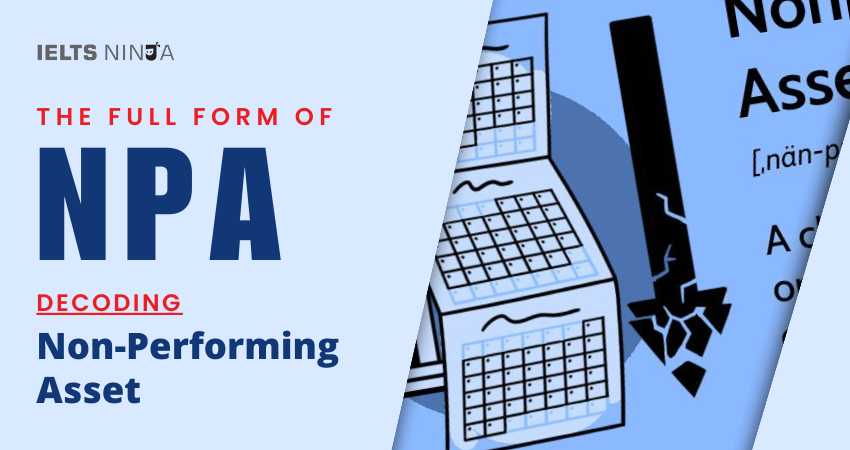The full form of NPA stands for “Non-Performing Asset”, and it is a financial term commonly used in the banking and financial sector. An NPA refers to a loan or advance that has stopped generating income for the lender or financial institution because the borrower has failed to repay the principal and interest for a specified period. In this guide, we will explore the details of NPAs, their classification, impact, and management. The following are the key details of Non-Performing Assets (NPAs):
Classification of NPAs:
Standard Assets:
Loans and advances that are being serviced regularly by borrowers, with no significant repayment issues, are classified as standard assets. These loans are considered low-risk and are not categorized as NPAs.
Substandard Assets:
A substandard asset is one where the borrower has started to show signs of irregular repayment, but it is not yet a non-performing asset. These assets carry a higher level of risk than standard assets.
Non-Performing Assets (NPAs):
An NPA is a loan or advance where the borrower has failed to make principal and interest payments for a specific period, typically 90 days. At this point, the loan is categorized as an NPA.
Doubtful Assets:
Doubtful assets are those where there is a significant doubt about the borrower’s ability to repay the loan. These assets have a high risk of non-recovery.
Loss Assets:
Loss assets are loans or advances where the recovery of the principal and interest is highly unlikely, and the asset is considered a loss to the lender. These assets are written off from the lender’s books.
Impact of NPAs:
- Financial Health: High levels of NPAs can weaken the financial health of a bank or financial institution. Unrecovered loans can result in financial losses.
- Reduced Profitability: The interest income that the lender would have earned on NPAs is lost, leading to reduced profitability.
- Capital Adequacy: High NPAs can erode a bank’s capital adequacy ratio, affecting its ability to lend and grow.
- Credit Risk: NPAs indicate credit risk, and excessive NPAs can affect the lender’s creditworthiness and ability to raise funds.
- Economic Impact: A high level of NPAs in the banking system can have broader economic implications by limiting credit availability for businesses and individuals.
Also Read: Best online IELTS coaching & training academy
Management of NPAs:
Identification:
Banks and financial institutions regularly assess the repayment status of their loans to identify potential NPAs. Borrowers who have defaulted on payments for 90 days or more are classified as NPAs.
Provisioning:
Lenders set aside funds for expected losses due to NPAs. The amount of provisioning is determined by regulatory guidelines and the classification of the NPA.
Recovery and Resolution:
Lenders use various methods to recover NPAs, including negotiation with borrowers, restructuring of loans, selling collateral assets, and legal actions such as asset seizure and auction.
Asset Reconstruction Companies (ARCs):
In some cases, banks transfer NPAs to ARCs, which specialize in resolving and recovering distressed assets.
Prevention:
Banks also focus on preventing NPAs by conducting thorough credit assessments, monitoring borrower financial health, and offering timely support to borrowers facing temporary financial difficulties.
Regulatory Framework of NPA:
- Each country typically has its own regulatory framework and guidelines for the classification and management of NPAs. These guidelines are often set by the central bank or financial regulatory authority.
- The goal of such regulations is to ensure the stability of the banking and financial system and to protect the interests of depositors and investors.
Conclusion:
Non-Performing Assets (NPAs) are loans or advances where borrowers have failed to make principal and interest payments for a specified period, typically 90 days. NPAs can have a significant impact on the financial health and stability of banks and financial institutions. Proper identification, provisioning, and management of NPAs are crucial for the sound functioning of the banking sector and the broader economy.








